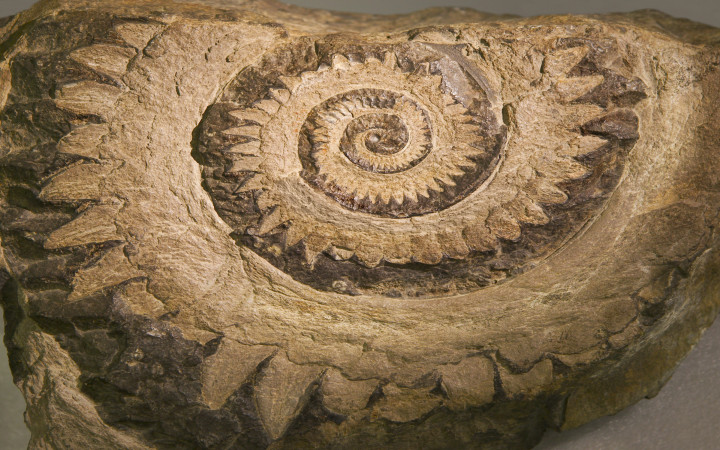Today’s Wonder of the Day was inspired by Ethan. Ethan Wonders, “what do helicoprion sharks use their teeth for?” Thanks for WONDERing with us, Ethan!
If you’ve been WONDERing with us for a while, you might already know a bit about fossils. Maybe you’ve read about the best places to find them. Perhaps you’ve learned how they help us know what dinosaurs looked like. Today’s Wonder of the Day is about a creature whose fossils have fascinated scientists for many years—the helicoprion!
What was the helicoprion? For a long time, paleontologists thought it was a shark. Today, they know it’s most closely related to the modern ratfish.
The helicoprion swam in the ocean’s depths about 270 million years ago. Around 235 million years ago, they became extinct. The first recorded fossil of the animal was found in 1899 by Russian paleontologist Alexander Petrovich Karpinsky.
Since then, fossils have been unearthed in Russia, Australia, Mexico, Japan, the western United States, and many other places. However, most are partial fossils of only one part of the helicoprion’s body—its teeth. These are no ordinary teeth, though. The fossils reveal a row of sharp, slanted teeth in a spiral formation that resemble a buzz saw.
This arrangement of teeth came to be called a tooth whorl. It puzzled scientists for decades; after all, the fossils gave them little to go on. Much of the helicoprion’s body was made from cartilage. This meant that teeth were all that remained long enough to become fossilized.
Experts came up with many hypotheses over the decades to explain what the helicoprion could have looked like. Most attached the tooth whorl to its jaw. However, they disagreed on whether it was part of the top or bottom jaw. Some thought the row of teeth must curve outward, while others said it likely spiraled inward toward the mouth. One theory even connected the whorl to the animal’s tail!
Then, a fossil found in Idaho in 1950 shed some light on the mystery. Paleontologists who studied it found that the fossil contained both a tooth whorl and some bits of cartilage. Further inspection led them to some interesting discoveries.
The scientists found that the tooth whorl was most likely attached to the helicoprion’s lower jaw. In fact, they don’t believe the animal had an upper row of teeth at all. Instead, the whorl sat vertically. It filled the entire lower jaw, spiraling outward from the mouth and into supportive cartilage.
How did helicoprion use their teeth? Like most animals on Earth, they used them to eat! When prey made the mistake of swimming too close, the helicoprion could slice them in half with one bite. The animal could continue chopping with its saw-like teeth until the prey was in bite-sized pieces.
Earth’s ancient history is full of interesting creatures. And the helicoprion is just one of them! Its teeth make it a unique animal indeed. What other creatures of the past are you interested in? Learn more about prehistoric animals today!
Standards: NGSS.LS1.A, NGSS.LS4.A, CCRA.R.1, CCRA.R.2, CCRA.R.4, CCRA.R.10, CCRA.W.2, CCRA.W.4, CCRA.W.9, CCRA.L.1, CCRA.L.2, CCRA.L.3, CCRA.L.6, CCRA.SL.1, CCRA.SL.2




